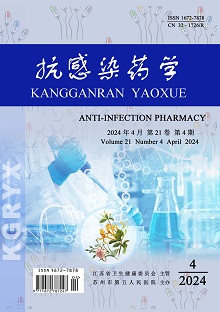SUN Li-yun, GONG Jian, CHEN Yuan-sen, LI Xia, YANG Xiao-yu
Objective: To analyze the treatment process and pharmaceutical care of two patients with lung injury clinically treated with sivelestat sodium, and to provide reference for the safe and reasonable clinical use of sivelestat sodium. Methods and Results: Case 1 was admitted to the hospital for treatment because of "headache, dizziness and disturbance of consciousness for 2h caused by traffic accident". Right lateral ventricle drainage and drainage needle implantation were performed, and symptomatic treatment was given after the operation. On Day 21 after admission, the patient was transferred to ICU, and levofloxacin and meropenem were used in combination to strengthen anti-infection. On Day 22 after admission, the patient developed ARDS, and the doctor consulted the clinical pharmacist about the precautions for using sivelestat sodium before dissolving 0.3 g sivelestat sodium in 50 mL 0.9% sodium chloride injection, for pumping into the patient at a rate of 2 mL/h. Other pharmacists' suggestions were adopted by the doctor, but the patient was still poor in condition, and then transferred to a superior hospital for further treatment. Case 2 was admitted to the hospital for treatment because of "general weakness accompanied by sore throat and fever for 2 days", and the symptoms did not improve significantly after symptomatic treatment. After the consultation of ICU experts, the patient was transferred to ICU for treatment. On Day 3 after admission, the patient was diagnosed with multiple organ dysfunction syndrome (heart, lung and kidney), and experts from the superior hospital suggested anti-inflammatory and continuous renal replacement treatment, with intravenous drip of 0.2 g sivelestat sodium for 7 days, q24h. The clinical pharmacist suggested that sivelestat sodium should be used within 72 hours of lung injury. If there was another organ dysfunction in the elderly patient, it was recommended to discontinue the drug. If the improvement after 5 days of medication was not ideal, the drug could be discontinued. On Day 11 after admission, the inflammatory reaction of both lungs of the patient worsened, and sivelestat sodium had been used for more than 5 days, so the clinical pharmacist suggested discontinuing the drug, and the doctor adopted this suggestion. During this period, no adverse drug reactions (ADRs) occurred. Conclusion: Clinical pharmacists participate in clinical treatment, learn the latest pharmaceutical knowledge, put forward medication suggestions for unused drugs in time, analyze the advantages and disadvantages, and implement pharmaceutical care to avoid the occurrence of ADRs.
